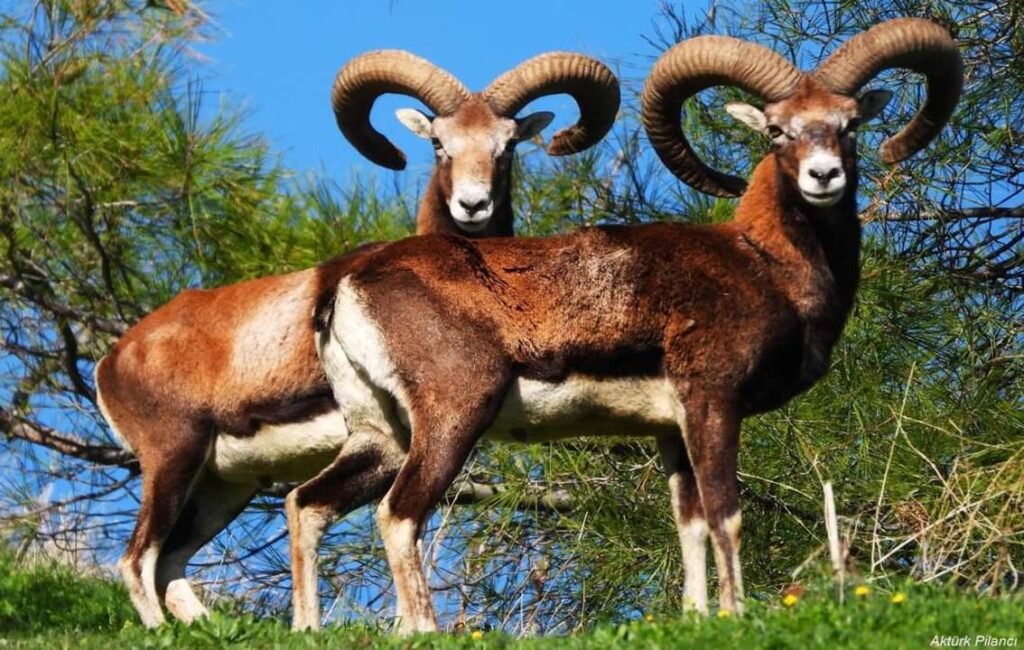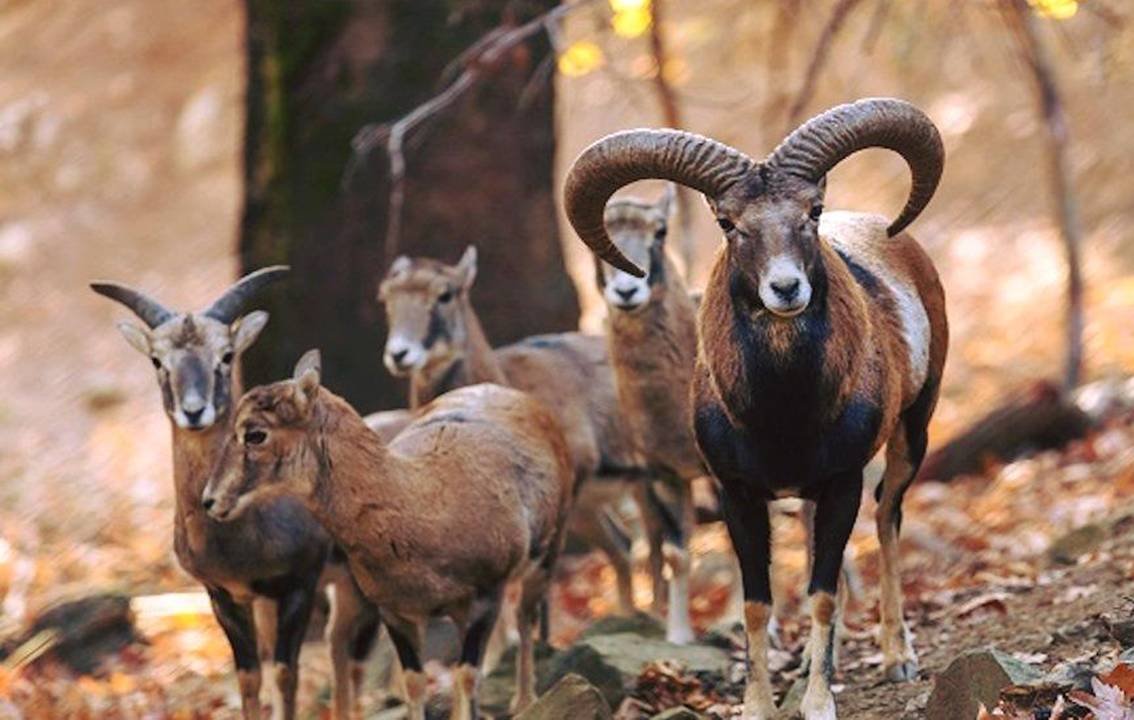A CYPRIOT ICON
A WILD SHEEP SPECIES NATIVE TO CYPRUS
A NATIVE OF THE PAPHOS FOREST
The Cypriot Mouflon (Ovis gmelini) is a native mountain goat that lives in and around the Paphos Forest of Cyprus. Thought to be the ancestor of modern domestic sheep breeds, other species of this animal are also found in parts of Europe and the Middle East. These include the Caspian region, which includes Eastern Turkey, Armenia, Azerbaijan, Georgia and Iran. Mouflons have inhabited the island since the Neolithic period, and mosaics and texts from the Greco-Roman era depict and mention hunting scenes involving these majestic animals.
A HIGHLY SPRIGHTLY AGILE ANIMAL
The highly agile Cyprus Mouflon is known to move quickly on the forest slopes of the Troodos Mountains, particularly in the area of Tripylos. Often observant, they rely on each other to warn against any impending danger. A black line running from their head through to the back to their tail allows them to instantly blend into the natural landscape, often making them hard to spot. They can, however, be observed when they do not feel threatened or when they are feeding.
A DIVERSE FEEDING RANGE
The typical life span of a Mouflon is around 15 years. Although smaller than their European and Asian counterparts, the Cyprus Mouflon is the largest wild animal on the island. Males can typically weigh up to 35 kg and have a shoulder height of up to 75 cm. Females are smaller, typically weighing up to 25 kg. It is not uncommon for a male Mouflon to have a whole harem of females during the mating season. The females typically give birth to a single offspring during late April to early May. They often feed on grasses, field plants, various berries, wheat sprouts, and tree foliage. Herds of Mouflon have also been known to raid farms because of their diverse feeding range.
A SERIOUS NUISANCE TO SOME FARMERS
Several farmers, who live in the communities dotted around the Paphos forest, consider the animal a serious nuisance. These farmers have been constantly calling for a designated area to be established for the animals to live in. They claim that the wild animal infringes on their livestock, depleting their food sources, and also spreads disease. To date, there are no plans to create any Mouflon designated areas.
A UNIQUE PHOTO OPPORTUNITY
The Cyprus Mouflon has become a much-loved and photographed icon for the island. Photos often show them gloriously posing their impressive curled horns, which often mark their unique appearance against the lavish landscape of the Troodos foothills.
The Cyprus Mouflon
Although Cyprus is home to several wild animals that freely roam the countryside, none are as iconic as the Cyprus Mouflon. Found only in Cyprus, this animal is one of the island’s most magical and rarest treasures. Also known as the Agrino, it represents in some ways the island’s deep connection to nature. With this in mind, it can be said that the Cyprus Mouflon isn’t just an indigenous wild sheep, but also a story of survival and a stark reminder of this island’s resilience. The Cyprus Mouflon, as a result, is so revered that it also features on the island’s euro coins.
The Cyprus Mouflon helps to create a truly unique symbol of the island’s natural heritage. Once nearly extinct, the Cyprus Mouflon now thrives. Today, these gentle yet resilient creatures form an example of the island’s commitment to preserving its wildlife. Conservation efforts and their protection under European Union law have seen the creation of a protected area, which forms part of a national park. This iconic creature can freely roam the Paphos Forest and the Troodos foothills because of this.
Although rare, it is still possible to see this animal’s striking curved horns and tawny coat in the wild. Hikers, traversing the Paphos Forest area, have recorded sightings of these truly magnificent creatures. Further sightings have also revealed this animal in its natural habitat in and around the Troodos Mountains, and it has also been seen in the Akamas Peninsula.



